On an iron-grey afternoon in Glasgow at the end of last year, I walked into a city centre bar to meet James Cruickshank, founder and editor-in-chief of The Digger, Scotland’s most notorious crime magazine. The place, chosen for its proximity to Glasgow Sheriff Court, was half deserted when I spotted Cruickshank, an extravagantly mutton-chopped 61-year-old, sitting pensively at a wooden table wearing a sharp grey blazer. I had come to Scotland’s second city to spend a week shadowing the elusive editor and learn more about the unlikely success story described to me by the Scottish novelist John Niven as, “Hello! magazine for Glasgow criminals and maniacs”.
Cruickshank had been cautious when I’d emailed weeks earlier outlining my interest in The Digger, explaining that he’d been “mugged off” by “media types” in the past. I intimated that he was referring to a 2007 BBC documentary about his then fledgling magazine, in which he’d worn dark glasses and a Soviet-style furry hat “as a disguise”. Still, there he was sitting across from me, picking at a plate of chips. “I’m a muckraker,” he said, as if by way of explanation. “It’s an essential part of the democratic system, even if it gets looked down on by snobs. No one else was doing it. My theory was that where there was muck, there was brass.”
Every Thursday, some 700 newsagents in Glasgow and its surrounding towns display the latest issue of The Digger. “We aren’t in WH Smith or any of the supermarkets, I don’t think they’d have us,” Cruickshank said. Two pounds buys you a 24-page, pocket-sized magazine full of the week’s ugliest and most titillating local news. Fresh reporting and extensive court coverage jostles for space with the latest prison gossip and underworld feuds, presented in bold tabloidese:
GERBIL’S DISCIPLE STOPPED DEAD
THREE’S A CROWD IN DATING ROW
GLASGOW GANG WAR RAP
It’s a world of pixelated mugshots, busted pill mills, dodgy prison guards and warring “hoods” from the city’s isolated housing schemes, populated by a revolving cast of characters with monikers like Murf and Fergie, Boab and Duck. Average weekly sales clock in at about 6,000, though a particularly “juicy new gangster story” might boost that number by 1,000, give or take, according to Cruickshank. When you’ve been doing this for two decades, he said, “you have a fair idea of what’s going to work and what isn’t”.
The UK is currently in an odd epoch in the history of crime coverage. The past decade or so has seen the rapid rise of the true crime genre, in the form of blockbuster podcasts and TV documentaries, and their attendant dramatic adaptations. There have been endless debates about their ethics, as well as a growing weariness at the sheer rate of production, which has shown few signs of slowing down.

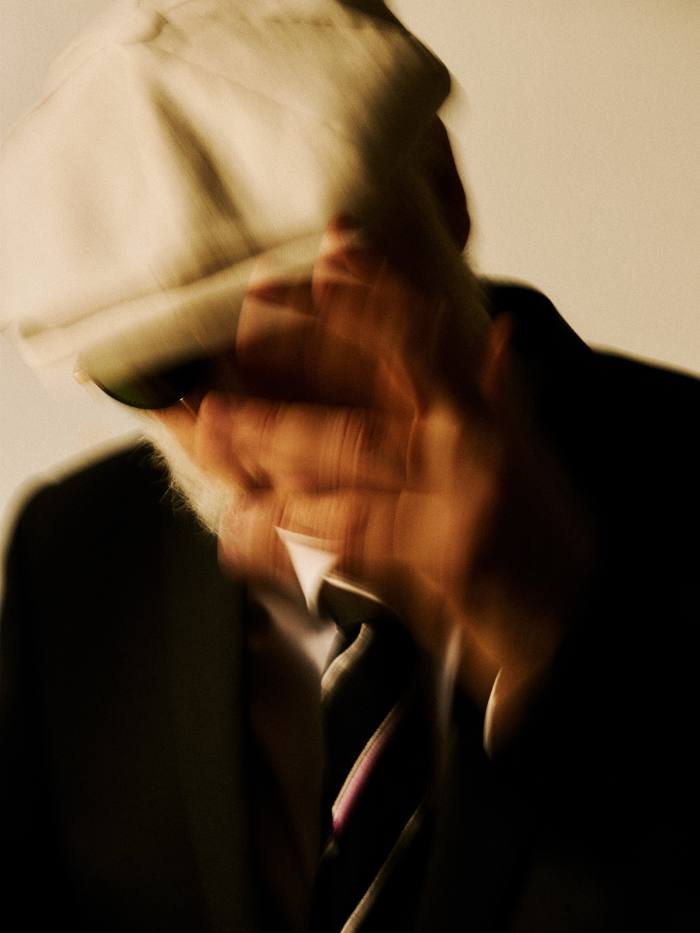
The parallel reality is of a traditional newspaper beat that has been partially decimated. As the 2019 Cairncross Review into journalism showed, coverage of criminal trials in the UK has fallen dramatically. Between 2012-16, court reporting dropped by 30 and 40 per cent in the national and regional press respectively, a decline that has continued unhalted. Almost every national paper once had a dedicated court reporter, or at least a representative tasked with covering the biggest trials. Today, there are far fewer at the national papers although some regionals still have court reporters.
This is not a healthy development. As veteran crime correspondent Duncan Campbell noted last year, “the UK public is now largely unaware of how and why so many people — the highest per capita proportion in western Europe — are punished and jailed”. Campbell, who wrote the authoritative history of British crime reporting, We’ll All Be Murdered In Our Beds (2016), reiterated this point when we spoke on the phone. “Most trials and most courts are completely uncovered.”
I have been reading The Digger since the mid-2010s, when I was studying for a journalism masters at Strathclyde university in Glasgow. It was a strange time. I spent my days immersed in earnest discussions of press ethics, my nights working full-time at a city centre dive bar. I lived in a dingy ground-floor tenement flat in an unglamorous corner of the city’s East End serviced by a string of local newsagents, each of which had the magazine on prominent display.
At first, I wondered whether The Digger was serious. Were the editors having a laugh? But my weekly habit formed quickly enough; I’d always been interested in crime reporting and the repelled fascination it generates. The hours at university spent contemplating the decline of Britain’s local press and the thin moral tightrope walked in crime reporting seemed at odds with the reality of this brazen little magazine, without much in the way of an online presence and which appeared to delight in flying in the face of both. Not that The Digger was ever mentioned in any class I can remember.
The magazine’s origin story is indivisible from that of its founder. James Cruickshank was born in 1961 and spent his childhood a couple of hundred miles north of Glasgow in the Scottish Highlands. His journalism career began in his mid-twenties, after he returned home from a stint studying at a south London polytechnic. He was ambitious, always full of new schemes. His first venture, The Deerlander, was a free sheet based in a Sutherland seaside town. It lasted just a year before its printer went bust in early 1988. After that, Cruickshank made his way to Aberdeen to work as a news reporter at The Press and Journal, which he left a year later during a workers’ union strike at the paper.
Leaving Aberdeen marked the beginning of a peripatetic decade for the young journalist. He spent time in Holland and Albania, followed by a seven-year stint scratching out a living as a freelance reporter in New York. Returning to Scotland in the early 2000s, broke and disheartened, Cruickshank settled in Glasgow. He rented a pokey flat in a high-rise block in Possilpark, commonly known as Possil, to the north of the city, one of the most deprived areas in Britain. He described some of his neighbours as “murderers and rapists, thieves and gangsters”, adding, “There was a lot of good news around there, if you treaded carefully.”
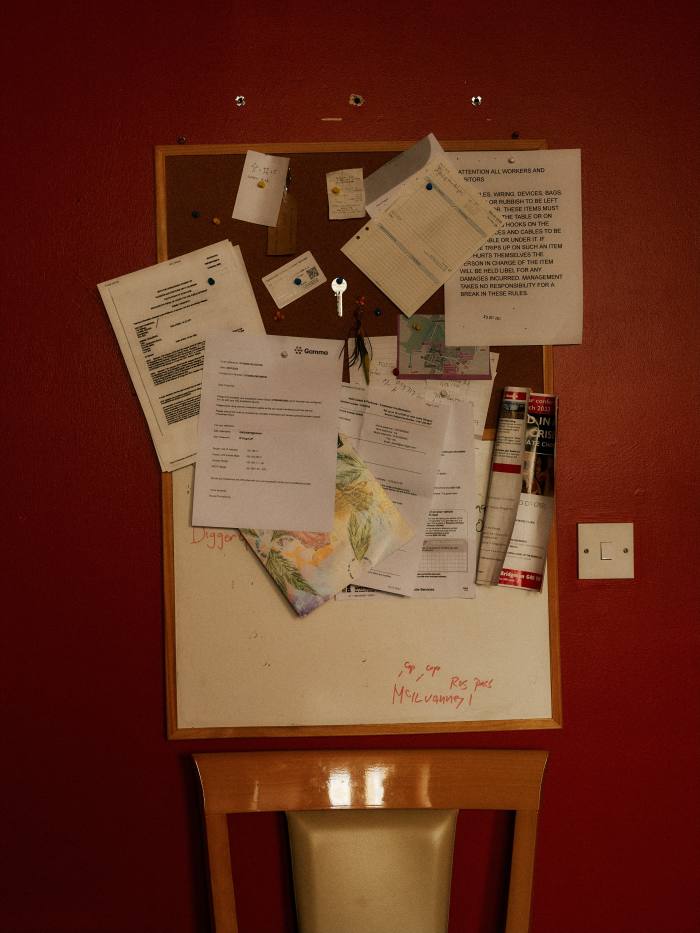
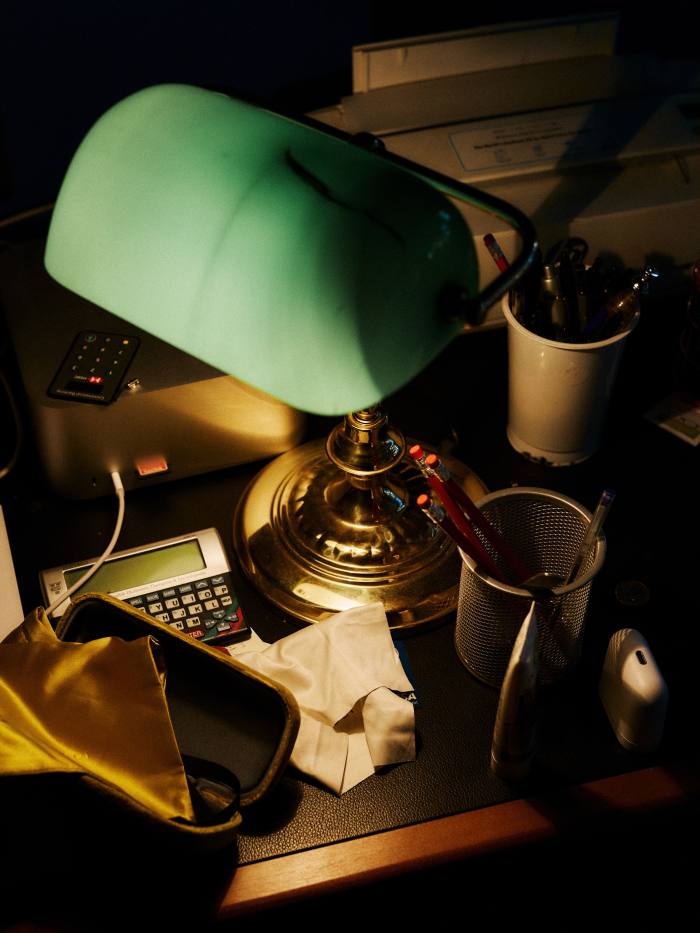
It was a particularly violent time in the city’s recent history. In 2005, the World Health Organization labelled Glasgow the “murder capital of Europe”, after 83 homicides were recorded the previous year. (Criminal violence has declined since then. In 2021-22, the city recorded 10 murders, the highest number in Scotland, but a significant drop from the mid-2000s.)
Freelance reporting didn’t prove much more lucrative back home than it had in the US. Cruickshank said that the Glasgow papers he was working for would routinely take his stories, only to pay months later, if at all. “They wouldn’t pay more than 300 quid for anything I did. It could have been Prince Charles in a . . . relationship with a pig, and it would be 300 quid,” he said.
But Possil seemed to spell an unmissable opportunity: an untapped market with its own perpetually self-generating leads and scoops, if only there was a publication to print them. In 2003, Cruickshank was ejected from the National Union of Journalists for an allegedly libellous piece on the union’s national organiser. The Digger was founded in August 2004.
“I got two sheets of A4 paper, a digital camera, an old desktop printer and put together eight pages,” he recalls. He sold copies door-to-door and at local markets. Cover price: 30p. “I hired some kids to help,” he remembers. But “they threw all the copies in the canal and called me a paedo”. It wasn’t long before word of the home-made magazine stuffed with local gossip spread around Possil. These were the stories that never made it to the established local press, let alone the nationals.
Sales and notoriety grew in tandem. When a Possil newsagent agreed to stock The Digger in 2004, queues began to form outside every Thursday morning. This was hyper-local news in action, long before the term came into circulation. “I’d drop them off by bike. People would stop me before I’d even made it to the door. It was a great time,” Cruickshank said. Soon, newsagents and shops beyond Possil began to sell the magazine.
From the beginning, Cruickshank focused on the big local names — reports of the city’s often warring Lyons and Daniel gangs, based in Milton, north Glasgow, and nearby Possil respectively, have proved enduringly popular — as well as seedy mid-tier players, such as the convicted pimp Hugh O’Donnell, from Bothwell, who was given his own front page in 2006. Equally, Cruickshank has no qualms in covering alleged official corruption: stories of crooked prison guards, of police officers turning a blind eye to the city’s drug gangs.
Not everyone was impressed. There were death threats, assaults on delivery drivers and “monstrous” lawsuits that almost crippled the magazine, including one early-2010s action from some wealthy businessmen accused of being drug dealers. The death threats have presumably come from members of the city’s criminal underworld, whose exploits have provided Cruickshank such rich material over the years. In 2020, his car was firebombed by unknown assailants. But almost 20 years after it was first printed, The Digger persists in its dual mission of carving a living for its proprietor and serving as a thorn in the sides of Glasgow’s criminal fraternity.
At least, that’s the Cruickshank-approved history: a rags-to-riches tale of a plucky independent magazine that has succeeded against the odds. The truth is rather more tangled.
It had just gone 9.30am on a Thursday morning at Glasgow Sheriff Court, three storeys of sharply angled 1980s brutalism on the south bank of the River Clyde. The ground-floor foyer was already teeming. Lawyers hurried past, speaking in hushed tones, while the daily blend of defendants filtered in through security, some alone, others buttressed by spouses and partners, friends and family. Faces showed the strain of the day to come. Hands shoved deep in trousers pockets. Gleaming new trainers scuffed against the polished floor.
I took a seat on a low bench and waited, taking in the start of business at what’s often referred to as Europe’s busiest court. It wasn’t long before a smiling Cruickshank appeared, bounding into vision from an unseen staircase. At our first meeting, he’d described the interior of the building in glowing terms, noting its marble floors and vaulted ceilings. A universe away, he said, from its shabby equivalents across the rest of Scotland. There was, certainly, no shortage of marble.
He led me down a flight of stairs and across a brightly lit corridor lined with courtrooms, crowded with people waiting in uneasy quiet. The door to the press room swung open to reveal a windowless space roughly the size of a large store cupboard, filled with a desk and chairs, where I was briefly introduced to Sue McCourt, a cheerful, diminutive Digger stalwart and ex-legal secretary in her mid-seventies. She’d come across the magazine at a newsagent roughly 18 years ago, after an early morning swim. “I was absolutely fascinated. It was like [my] Damascus moment,” she later told me with a laugh. McCourt has performed odd jobs and supplementary reporting for the magazine ever since. The press room is pretty much undisputed Digger territory, save for the indefatigable press agency reporter who spends his days feeding the latest news into Scotland’s national media.
For Cruickshank, mornings at Glasgow Sheriff Court tend to pass in specific order. First, a close reading of the day’s trials and hearings. On the morning of my visit, he scanned the list expertly, indicating a few promising leads that we’d go and check out in aid of “Crime Stocks”, The Digger’s round-up of weekly court news, flush with the full names and addresses of the accused, which takes up the middle section of every issue, alongside the innocent-until-proven-guilty disclaimer set out in bold red.
Though technically allowed, the practice of including house or flat numbers — rather than just street names, which is done to correctly identify the accused rather than an uncharged person with the same name — makes many uncomfortable. What if printing an alleged criminal’s address brought them to harm? For Cruickshank, that is not The Digger’s problem. His defence runs something like this: if someone was stabbed with a knife and killed, it wouldn’t be the knife shop owner’s fault, would it?
If not the splashiest section of the magazine, Crime Stocks represents its bread and butter. It also involves a lot of legwork. Cruickshank led me on a whistle-stop tour of several hearings. There didn’t seem much of a pattern as to what did or didn’t merit closer examination, though anything was apparently fair game. Out: the woman having her restriction of liberty order quietly ended. In: the sentencing of a bewildered-looking, middle-aged man for dangerous driving.
Lawyers, clerks and police officers drifted by with mostly friendly greetings and the odd pointedly cold stare. Cruickshank’s reception wasn’t always so cordial. In 2005, his court privileges were revoked for a time after he was “chased out”, as he put it, and denied documents due to his reporting. In fact, The Digger had named and pictured the eight-year-old child of an alleged Glasgow crime boss wearing a bulletproof vest in her back garden, and was accused of breaching the Editors’ Code of Practice. Cruickshank believed he had a public interest justification for publishing the picture.
Stuart Ritchie, head of communications at the Scottish Courts and Tribunal Service, was hazy on specifics of the incident, though he stressed that the relationship with Cruickshank is fairly sanguine these days. “It’s helpful for us to have partners in the media. The Digger is just one of them, really. We provide information to him, the same way we do to all of the media,” he said, adding that he was not “aware of any specific issues”. A rather milder explanation than Cruickshank’s telling of events.
There was an era, in the mid-to-late 2000s, when The Digger had a staff of about 15, including several full-time reporters. Today, it’s mostly just Cruickshank, with the help of a couple of veteran freelance lieutenants and the long-term admin and distribution guy Wojtek. (He wanted to keep his surname private after several bad experiences with angry readers.)
Cruickshank was keen to stress that his reduced staff size wasn’t about money, although it’s true that sales aren’t what they were in the late 2000s, when he says they were selling 10,000 copies a week. One can only go on the figures Cruickshank provides, though he’s open about the magazine’s struggles during the early months of Covid, when circulation dropped to 3,500 and he had to dip into “the war chest”. Things have now rebounded, he explained. True, there are scores of true crime podcasts, but The Digger can offer its audience what others can’t, or won’t: a thrillingly direct hit of hyperlocal misery and despair, presented without any distracting moral ambiguity. As Wojtek put it: “People just like to see what their neighbours are up to. The gossip. The local gossip.”
It’s a point echoed by Jane Hamilton, long-standing former crime reporter at the Daily Record, a Scottish national tabloid. The Digger certainly knows its demographic, she told me over the phone. “Glasgow crime and gangland crime sells newspapers. He’s tapped into a niche market. People want to know what’s going on in their local community.” The appeal is pretty simple. “We’re all human and I think people would be lying if they said they’re not interested [in crime]. There’s a part of you that thinks, thank god that’s not me. That’s true for any story that involves misery and heartbreak.”
Cruickshank said he has taken in plenty of young trainees over the years, with varying levels of success. “I’ve had graduates coming in and wandering about like they’re Pulitzer Prize-winning journalists,” he said. “Every afternoon, they’re asking about their contracts. Fuck off mate, you’re here to do journalism not work at a trade union.” Retaining staff isn’t easy. Only a select few ever last longer than a year. He was, he explained, “fuming” when one promisingly ambitious young recruit jumped ship to The Sun last year, after three months of intensive training.
Alberto Lejárraga is one of The Digger’s recent shortlived ex-trainees. The young Catalan had just finished his National Council for the Training of Journalists qualification at Stirling university when a lecturer mentioned that the magazine was hiring. Within days, he’d started work, covering the courts and taking on odd jobs around the office. The original deal was for a three-month probationary period, potentially leading to a year-long contract. But Lejárraga said he never ended up signing any papers, instead working on a casual basis for less than the wage he’d initially been offered. “It wasn’t the best start,” he told me with a laugh. He quite enjoyed the work, though, and stressed that he “wasn’t exploited or anything like that”. But he can’t pretend he’s particularly fond of his old boss and his often mercurial moods. “This guy gets angry very quickly. And when he does, he insults you,” he said.
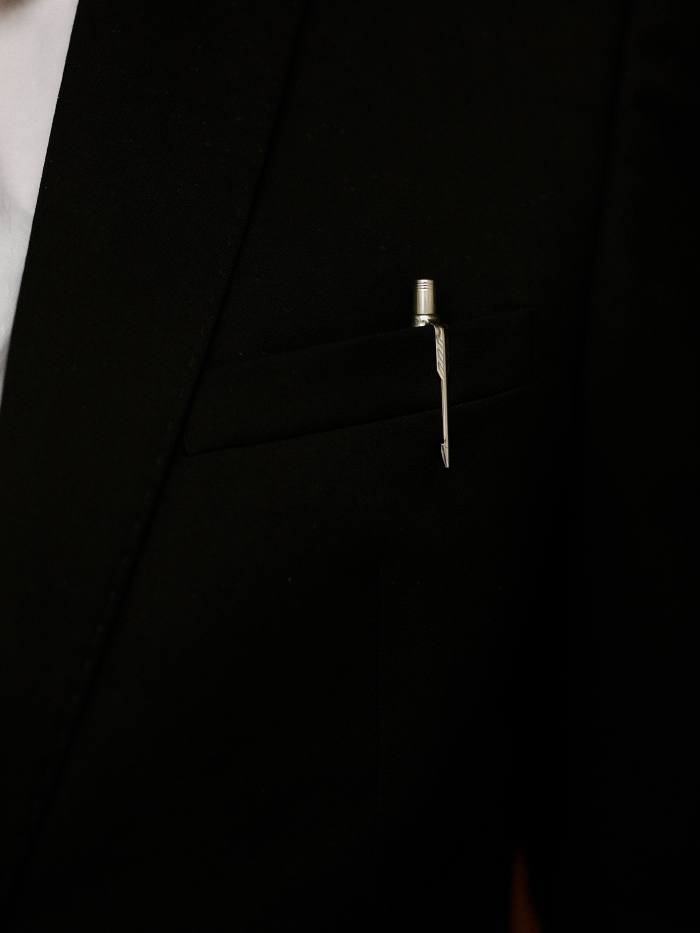
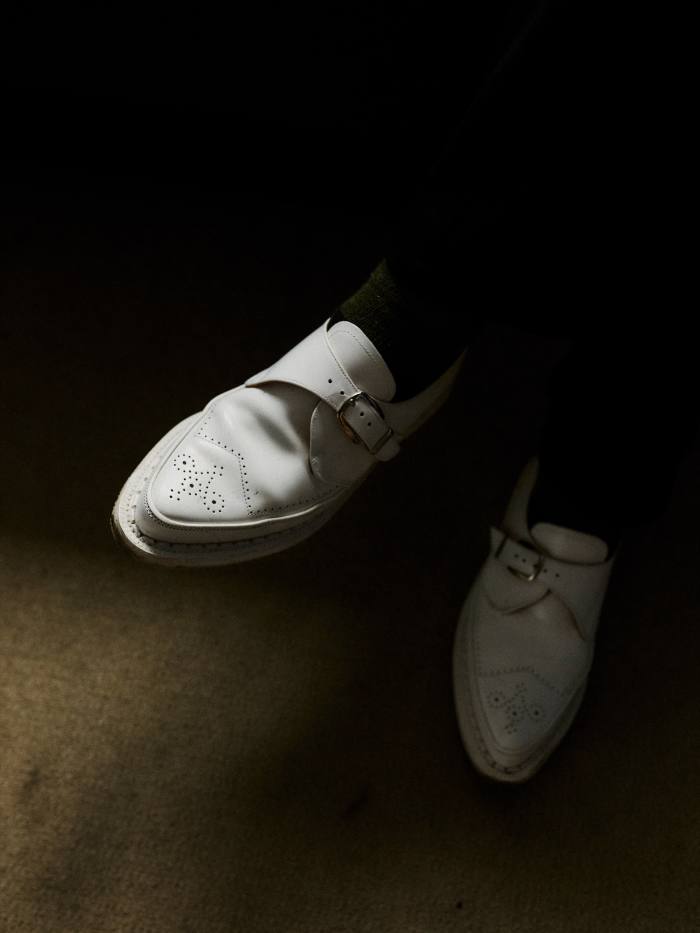
Lejárraga lasted two months at The Digger. The ending was abrupt. He said that he refused to write a Crime Stocks story that listed the accused person’s full address, including their house number, due to safety concerns. Cruickshank was apoplectic. Later that day, the cub reporter received an email thanking him for his work and letting him go. During his time at the magazine, Lejárraga said he saw two other employees leave, including one long-serving reporter who handed his notice in via Facebook Messenger after a particularly scathing dressing down from Cruickshank. Cruickshank disputed both accounts. “He didn’t understand that a [crime scene] is public,” he said of Lejárraga.
For all his bombast, though, The Digger’s editor is clearly capable of inspiring great loyalty. Those who stick around tend to be true believers. A couple of weeks after our brief introduction at the Sheriff Court, I asked Sue McCourt what it had been like working for Cruickshank for so many years. “He has extremely high standards for the reporting and production of the magazine. Perhaps his people skills are not [always] that great. But at my advanced age, I’ve had a number of extremely unpleasant bosses. Compared to them, James is an absolute archangel,” she told me wryly.
A blithe lack of concern with popularity is a central part of the true muckraker’s calling. It’s just as well for Cruickshank. A few weeks after my time shadowing him, I spoke with a Glasgow lawyer who has had several run-ins with Cruickshank over the course of his career. (He didn’t want to be named in this piece.) Though he had some sympathy with the idea of the crusading truth-telling reporter, he questioned how often The Digger lived up to its quixotic ideal. The alleged crimes that the magazine reports on range from the serious to the farcical. One wonders, for instance, about the public interest in printing the full address of the person accused of trying, and failing, to steal cash from a Tesco garage, or the one who missed a court date for being responsible for a “dangerously out of control dog”, among other non-organised crimes.
“Is he trying to communicate some kind of deeper story?” the lawyer said. “I see a lot of my clients in there, normal people who have nothing to do with organised crime.” Is it fair or proportionate, he asked, to publish the personal information of people going through “the worst times in their lives”?
The Scottish journalist David Graham Scott made the documentary about The Digger for the BBC in 2007. He spent several months working as the magazine’s very own court paparazzi as part of the film, which paints a decidedly ambivalent picture of the magazine. When I asked him about the experience of working alongside Cruickshank, he told me that he didn’t want to be negative. “I don’t think he has a lot of friends, though he’s someone who knows a lot of people. He [later] turned on me and demanded I take the film down. He was quite happy with it at the time. I didn’t force it on him.”
Scott’s documentary includes an interview with a man who had been named in The Digger as an alleged police informer. He rails against Cruickshank in a clip that has achieved niche cult status online. “He could have put me in danger in prison. But he went ahead willy-nilly. The people that are mentioned in this are heavy, heavy people who could get me done in, [just] like that.” The scene cuts to Cruickshank in a gloomy living room. “Well, he is a grass,” he replies, a hint of a smile on his face.
During my time with Cruickshank, I saw him on what I imagine is something like his best behaviour. He was solicitous and charming. My questions, even the critical ones, received mostly thoughtful answers. He told me that criticism of the magazine was often little more than snobbery on the part of the “creepy” media establishment and aloof middle classes, who don’t care about crime until it happens to them. Though he said it didn’t bother him, I detected a note of hurt that none of the main Glasgow papers had covered news of his car being set on fire in 2020. “The Record, The Sun, The Herald. None of them picked it up.”
I was keen to visit The Digger’s headquarters, a request eventually granted on the last evening of my week in Glasgow. Access to Cruickshank’s mobile number is strictly controlled, so we arranged to meet outside a city centre bar at 4.30pm. The current office — the magazine has moved a lot over the years — is up several flights of stairs in a block of pure Glaswegian Victorian gothic. Inside was a jumble of desks and loose magazines, while an open computer displayed the bare bones of the next issue. In the hallway, I noted several framed articles, carefully kept mementos from Cruickshank’s time in New York and a photo from The Digger’s late-2000s peak, with its beaming editor and three of its staff at an editorial meeting sitting around a long table.
Now, The Digger’s editor was alone at work on his latest lead, chasing down his sources after a car had deliberately been ploughed into the home of a high-ranking Glasgow gangster. Neither motive nor assailant were yet clear, though that would likely change in the next few hours, if Cruickshank could squeeze something more out of his sources on the phone. A muckraker in his natural element.
The Glasgow tabloids had already picked up the scent, he told me, gesturing to the front page of that day’s Scottish Sun paper (the byline was shared by the ambitious ex-Digger alumnus who had jumped ship). But their story was superficial, he said. They didn’t have the contacts he did. If all went well, his telling of it might have the making of a decent “splash story” for The Digger’s next front page, the sort that might shift a few hundred extra copies.
“I’m going to get something that’s better than that,” he said pointing at The Scottish Sun. “I already have something better.” A source told him that the gangster had narrowly avoided being mowed down, though much else remained hazy. Cruickshank told me he’d continue to press and probe for fresh angles and scraps of detail. His public would expect nothing less. “[The readers] know we aren’t going to run the same story as The Sun and The Record, because why would they buy the magazine then?”
Nineteen years on from The Digger’s beginnings in Possil, Cruickshank still perceives himself as an outsider, despite the longevity of his magazine and the more than decent living he has managed to carve out for himself. He told me that the resentment from Glasgow’s elites is almost palpable. These are the words of a man who has never forgotten their rejection of him on his return to Scotland in the early 2000s. “The established press are cheerleaders for money and power. And I’m not like that. I’m not interested. I’m a cheerleader for the down and out junkie in Possil.”
Earlier I’d wondered if there might ever be a future where magazine and editor split. Sure, he told me, there were other things he valued in life. But the magazine was still his obsession. Even during a recent holiday, he kept a close watch on proceedings from afar, poring over every front page story and minute fluctuation in sales. After all, they meant money. And something even more potent: confirmation that he knows a good story when he sees it.
Francisco Garcia is the author of “We All Go into The Dark: The Hunt for Bible John”, published in April by Mudlark/HarperCollins
Follow @FTMag on Twitter to find out about our latest stories first
This article has been amended to reflect that the Evening Standard is not a national newspaper and that it is not the only such paper to employ a full-time dedicated court reporter.












